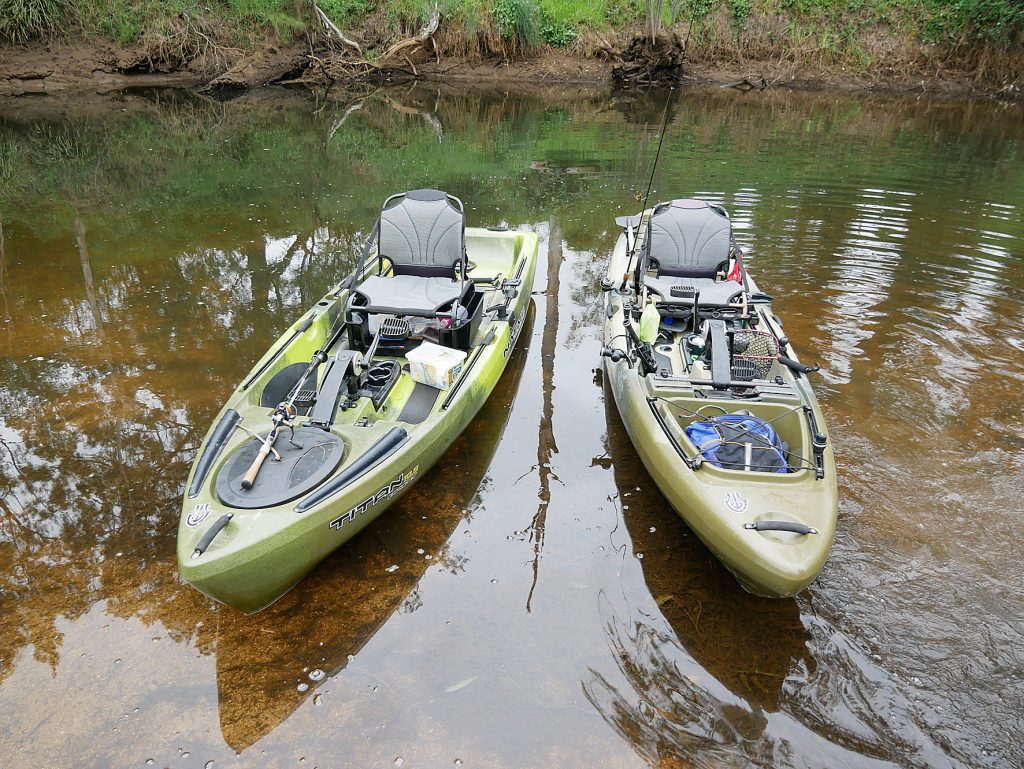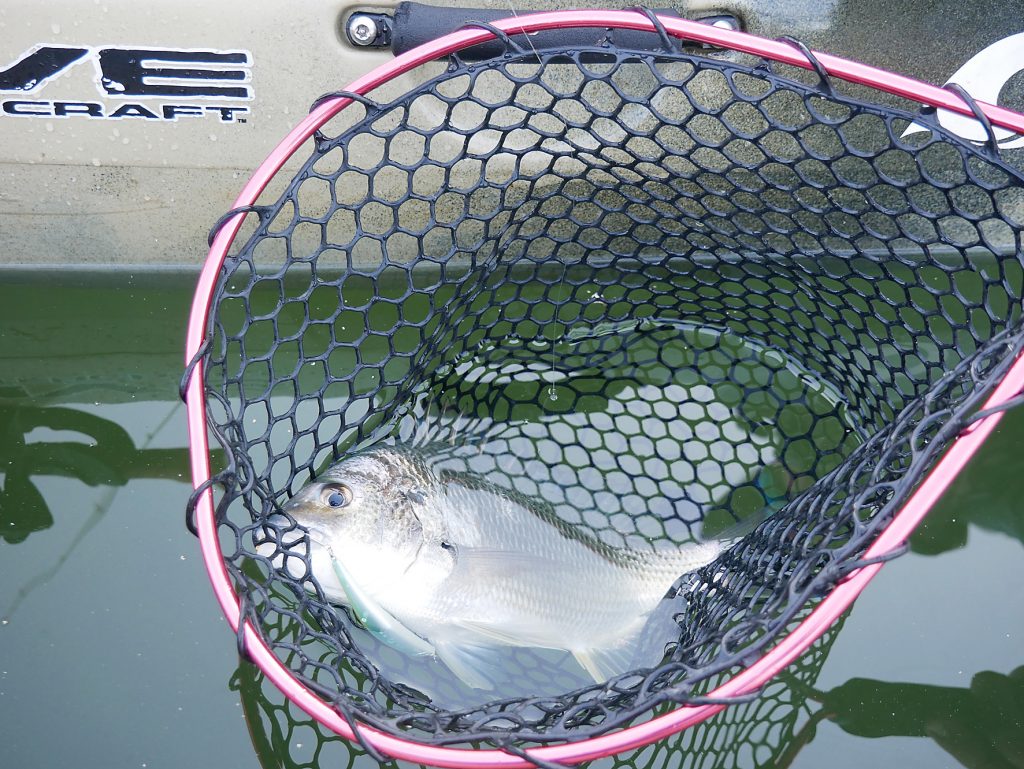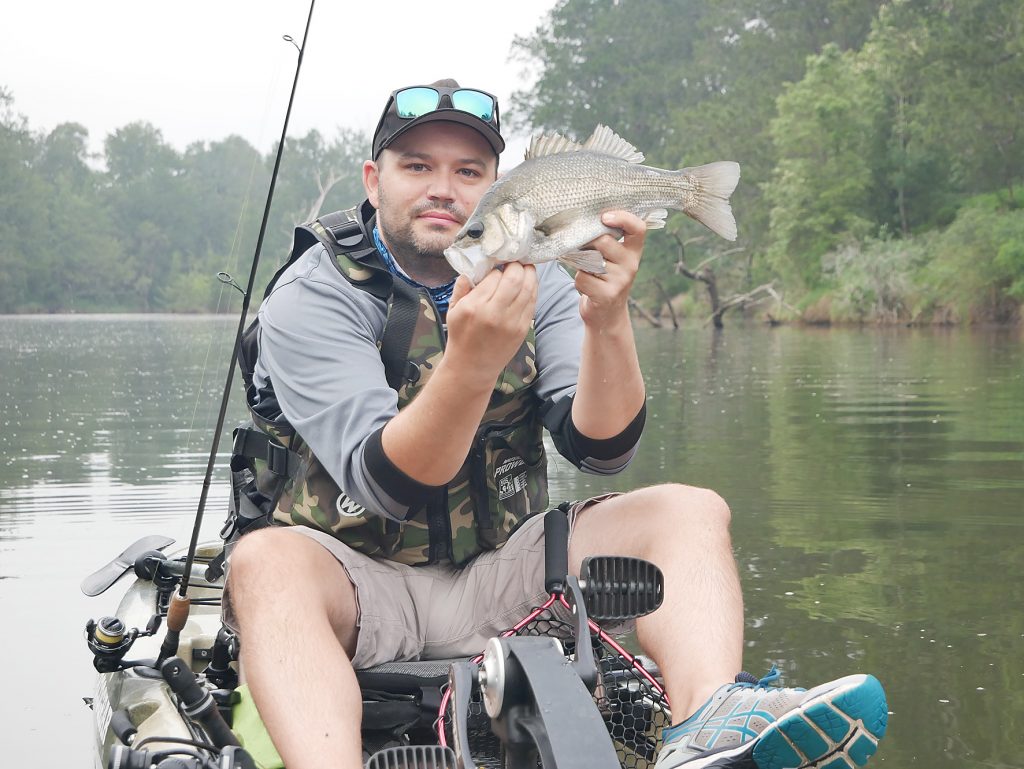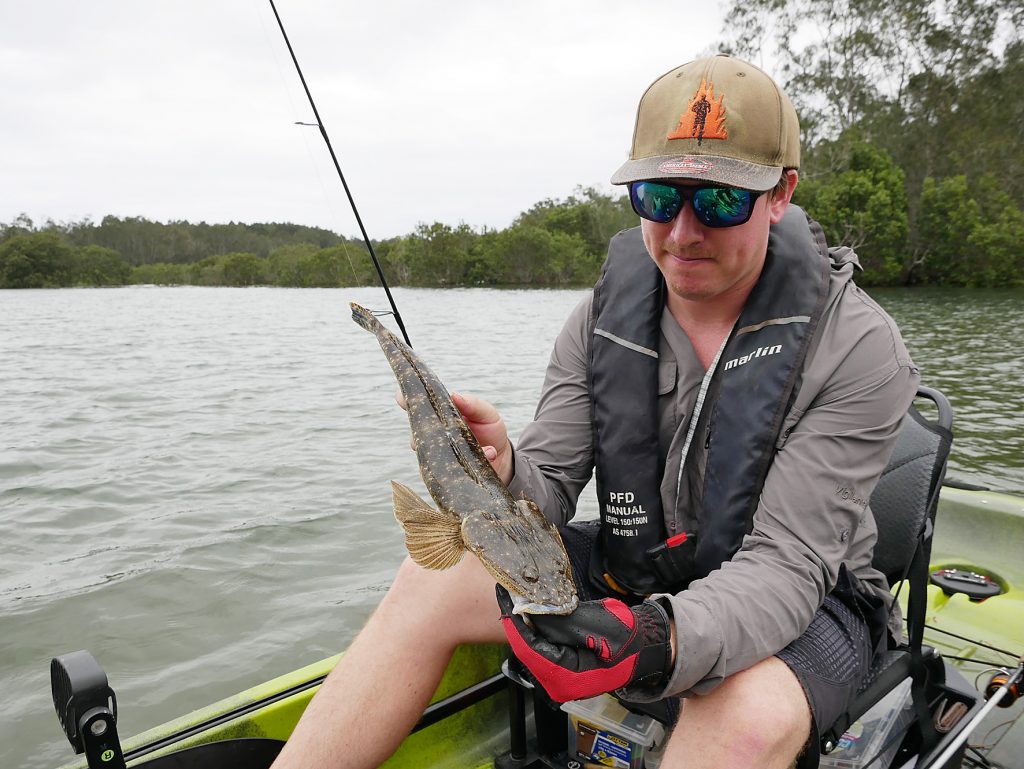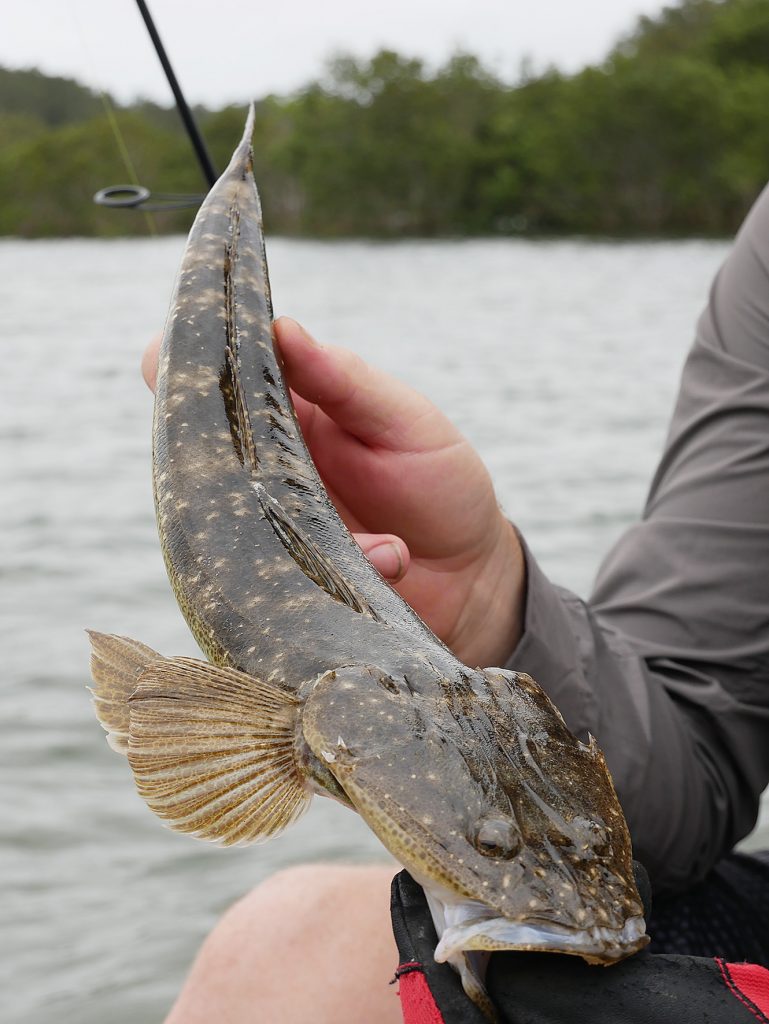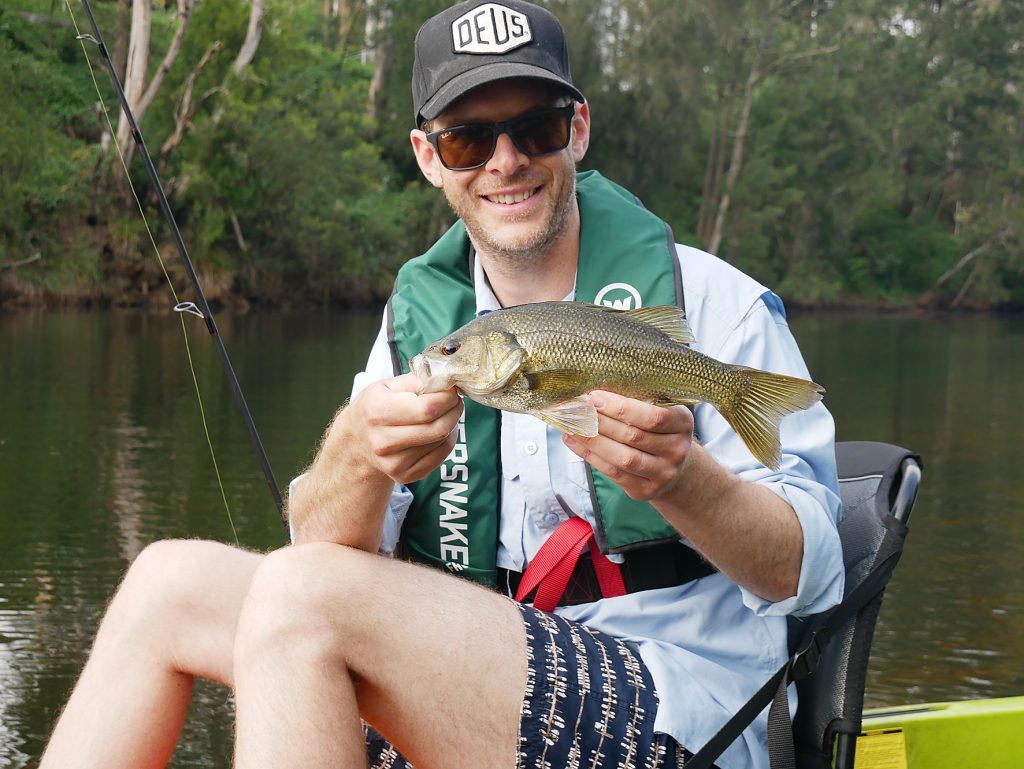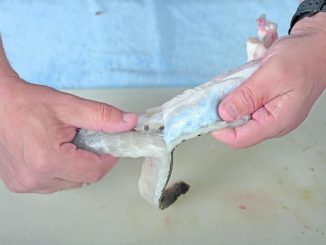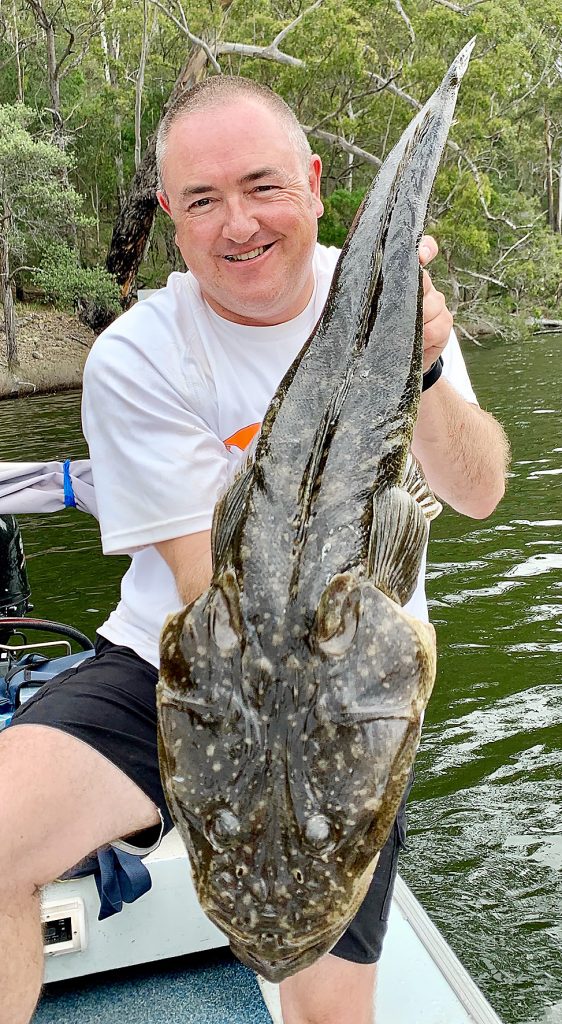
Jason Naumann knows the thrill of tying up with big crocs on the flats.
By Toby Grundy •
I love my flathead fishing. For me, there are very few angling experiences more rewarding than packing the ute, loading the kayak and heading off to the South Coast in search of big lizards.
March and April are two of my favourite months in which to target this great species because I can catch a lot of fish using a specific technique, and also because of the mixed bag of other species which show up while casting for crocs.
I spent two years writing the kayak ‘hotspot’ column for this magazine, and in that time I fished a lot of South Coast systems, from Lake Conjola right down to the Towamba River in Eden. During these trips I caught a lot of flathead using a variety of lures, ranging from plastics through to topwaters. I also wrote about a number of techniques I used along the way, from the ‘burn and kill’ to the ‘deadstick’.
That said, there was one technique I left out while writing the yak column as I was still trying to work it out. Fly anglers call it a ‘staccato’ retrieve. It’s a musical term that means ‘short and detached’, which describes the retrieve perfectly because you make pronounced short pauses and twitches throughout. I will discuss this method, and where to use it, in further detail below, along with some locations which provide great flathead fishing.
The Retrieve
A few years ago I started thinking a lot about lures and flies, and the similarities and differences between the two. As a spin fisherman and occasional fly fisho, I found a few key similarities in the way a fly is worked and how to get the best out of lures designed for spin gear. The ‘staccato’ retrieve was the first fly technique I tried (using conventional spin gear) for flathead that achieved success.
This retrieve style is easily transferable to spin gear. Cast your lure out into a likely area and let it sit for a few seconds before beginning the retrieve. This is the first pronounced pause. Once a few seconds have passed, give the lure a twitch to get it swimming and after one or two twitches, pause the lure again. The size of the twitch depends on the lure being used, but essentially you want to jerk the lure as hard as you can without the lure losing its core action. An example would be the Jackall Micro Pompadour, which can cope with a really strong twitch and still swim across the surface. However, as soon as a lure loses its action, it means the twitch was too heavy.
Lure Selection
This retrieve is particularly effective when throwing surface lures for flathead, and one lure that stands out from all others is the Bassday Sugapen. This lure is perfectly designed for the staccato retrieve as it is incredibly lightweight so it lands naturally, casts like a bullet and (similar to a fly) relies on the angler to insert the action. Because the angler is in complete control of the lure, it is far easier to insert the right pause and the right amount of power to achieve a pronounced twitch.
The other reason the Sugapen is so effective is because after a twitch, the lure will sit stationary with just the head sitting above the surface. The tail of the lure sits below, wobbling back and forth enticingly so that even during a lengthy pause the lure is still moving.
I work the twitch part of the retrieve by holding the rod high and twitching my wrist up and down while winding at the same time. I put a lot of energy into the retrieve to achieve a lot of movement, and if I’m not seeing water firing off the front of my Sugapen I know I’m not doing it right. I pause the lure for up to five seconds between twitches.
Other lures which work well using this method include the Squidgy Wriggler, Ecogear Grass Minnow, Megabass Siglett, OSP Bent Minnow and Jackall Micro Pompadour.
Location, Location
This type of retrieve works really well when drifting and casting along the flats because the lure looks like a distressed baitfish or crustacean moving at high speed in shallow water. To a predator, it looks like an easy target. Also, because of the pronounced pause and twitch, the flathead think the lure is injured, adding extra incentive to approach it.
If you can find a point which forms a flat, that’s ideal. One location which comes to mind is the Tomaga River, where there are several points around a number of islands which form dynamite sand flats.
Heavy snags like laydowns and root balls are also worth a look, although you will lose a few lures, especially if you’re fishing with soft plastics. There is also a high chance of getting bricked by a large flatty or even a bass (as has happened to me on a number of occasions). However, it is definitely worth it as I have found that there are some really big fish sitting just off these areas looking for a baitfish to make a mistake. The Towamba River contains a number of these types of snags and is well worth a look.
Tackle
For casting surface lures, I use a Quantum Energy 6’0 2-4kg rod matched to a Quantum Smoke S15 spin reel spooled with 6lb line and 8lb leader. This is a very light set-up but I’ve caught almost everything that swims (in a saltwater estuary) on it, from flathead and bream through to estuary perch and tailor.
I have talked to a number of anglers who fish this method, and each one uses a set-up unique to them. It’s a matter of getting out there and giving this retrieve a go, and then deciding what type of set-up you need.
For casting plastics, I use a Rovex Revenge 7’0”, 2-4kg rod matched to a Rovex Revenge 2000 reel. I like the extra length when casting plastics, but I also use this rod for throwing surface lures when fishing a large system that requires a long cast.
If I’m fishing really heavy snags (lure graveyards) I upsize all my tackle. These areas do hold big flatties but also mulloway, and just in case that fish of a lifetime comes along, I want to be in the fight. In this circumstance, I run a Quantum Throttle combo, which is a 6’6” spin rod matched to a 30 sized reel spooled with 15lb braid and 20lb leader.
Kayak, Boat or Bank?
I have fished from the bank using the staccato retrieve and have caught a lot of fish, and have also caught big numbers fishing from a yak and from a boat. I don’t think it really matters as long as you look for the right location and nail the retrieve.
Other Species
The best part about fishing for flatties along the South Coast of NSW is the mixed bag of other species that pop up throughout the session. Fishing in autumn around the flats using this retrieve puts you in the running for big bream, estuary perch and bass along with a host of other fish. Though I’m always targeting flathead, I never complain when a big EP powers over the flat and smashes my stickbait!
Conclusion
Throughout March and April the flathead fishing along the South Coast really fires up. Whether you’re fishing from bank, boat or kayak, the staccato approach to targeting big crocs in shallow water is one of the best ways to lock onto a fish of a lifetime.


